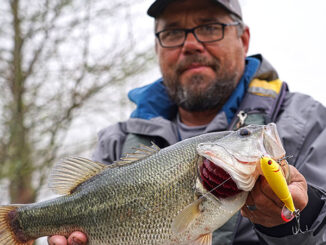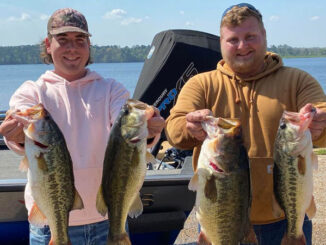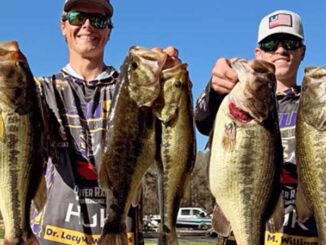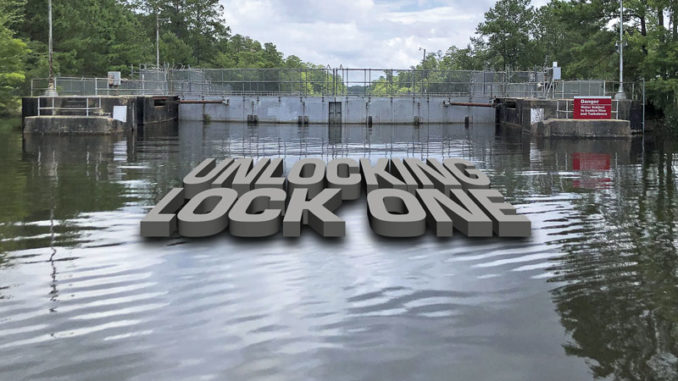
August isn’t prime time, but Lock One of the Pearl River Navigational Canal can provide some great summer bass fishing for anglers with a yen for investigating new waters.
When it comes to diversity of fishable water, Louisiana has a variety of tributaries, lakes and swamps that’s second to none, no doubt one of the reasons bass fishing is so popular. Fishermen across the state have been gifted with unique waterways where they can target their favorite fish.
Leading the way in terms of being unique is the Pearl River Navigational Canal, a 20-mile, machine-dug channel originally designed to make it easier for ships to transfer goods from Bogalusa to the West Pearl River. Now solely used for recreational purposes, it comes complete with dams, sand pits and even a shallow waterfall that flows over a sill at its northernmost section near Bogalusa.
The canal is divided into three sections by locks that are used to regulate water levels.
Chad Hartzog of Bush has been fishing the canal for more than 35 years. He is a tournament director for the Liars and Lunkers Club, a group of bass anglers that has been fishing the East Pearl River and Lock One area for years and is partially responsible for the bass population in the canal. After fishing tournaments on the East Pearl River, some fisherman would transport bass back to the Lock One section and release them. Over the years, Hartzog has seen the 12-mile stretch between Lock One and Lock Two develop into one of the best bass-fishing destinations in South Louisiana.
Because the section is “locked,” the water flow is minimal, and the clarity resembles trophy reservoirs familiar to bass anglers that fish north Louisiana. While the clarity is a plus to anglers, the still water can pose a problem in August’s raised water temperatures and the lack of moving water.
While Lock One can be a challenge to fish in summer, there are some adjustments anglers can take advantage of that will all but guarantee fish.
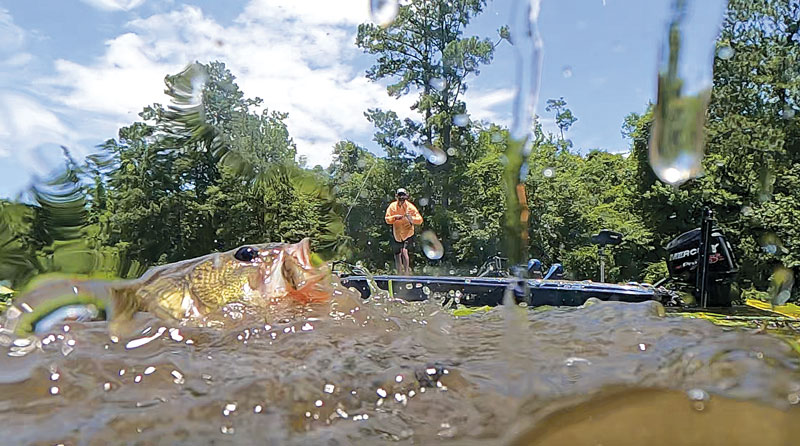
Find vegetation
When breaking down Lock One, anglers will notice one thing right away. The southern end is loaded with grass, a result from the soft substrate that makes up the bottom. As you head north, the bottom becomes more sandy — less beneficial for aquatic growth.
“On the southern end of the canal there’s a lot of vegetation. Matted up coontail, hyacinths, duckweed and lily pads are all growing thick around this time of year,” Hartzog said. “This forms canopies that the bass like to get under and cool off a bit.”
His favorite way to target fish hunkered down under grass mats and lilies is to pitch a craw or beaver-style lure. Hartzog prefers green pumpkin or
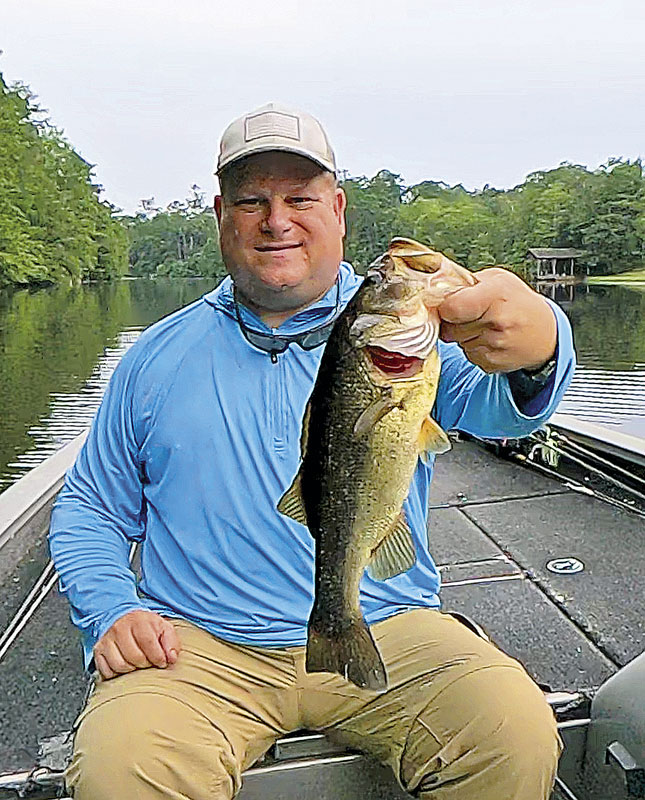
black/blue baits with a 1-ounce tungsten sinker pegged above a 5/0, straight-shank flipping hook on 50-pound braid.
“I like to be able to outmuscle these fish, and the braid comes in handy when ripping them out of the grass,” Hartzog said.
Wind+rain=Tide
Anglers who fish southeast Louisiana will tell you that tidal movement plays a crucial role in stirring up bait, which in turns gets the fish biting. In the case of Lock One, however, there is no tidal movement. The only current comes from the wind or the rain. Keeping this in mind will pay huge dividends.
“It makes a world of difference,” Hartzog said. “If there’s a little breeze blowing or an afternoon shower it breaks up the surface of the water and makes the fish more aggressive. Nine times out of 10, the side with the ripples on the surface is going to produce more fish,” Hartzog said.
Fish heavier
Fishing deeper is a no-brainer for anglers targeting August bass. Getting your lure to the bottom is more important than in spring or fall. As the day wears on and temperatures rise, Hartzog recommends fishing heavier, but don’t make the mistake of associating heavier with bigger. Hartzog likes to use smaller, more-finesse baits like a Zoom Fluke Jr. — with a bit of south Louisiana ingenuity.
“After threading the bait onto the hook, I insert a small finishing nail right alongside the hook to give it extra weight,” he said.
The head on the nail serves as an anchor that keeps it embedded in the plastic. The added weight allows the lure to sink faster, and Hartzog is able to cast farther without having to use a larger lure.

Fish deep
Avoiding the urge to beat the bank is a psychological problem for which some bass anglers are still in therapy. Hartzog said as much as you want to cast up onto the bank, don’t.
“I like beating the bank as much as the next guy, but the fact is, these fish aren’t going to be right up against the bank when the water temperature is 90 degrees,” said Hartzog, who positions his boat twice as far from the bank as normal, then makes long casts near the shoreline.
“Pay attention to where you catch your first fish, then hone in on what depth the bass are holding,” he said.
After doing this, Hartzog positions his boat over that depth range so he can make long, parallel casts off the front of his boat, maximizing the time the bait is in the strike zone.
While the majority of the canal averages 8 to 10 feet deep, Hartzog said there are holes more than 20 feet deep in certain spots. It’s these holes that can make a huge difference when locating bass that are in search of cooler water. When fishing the deep holes, Hartzog uses a chartreuse/blue Bandit 200 crankbait.
If you’ve never fished Pearl River Navigational Canal, Hartzog recommends try it at least one time. While August doesn’t rank high on most bass fishermen’s lists, taking these tips into account should make a difference in at least a few bass when fishing Lock One.
